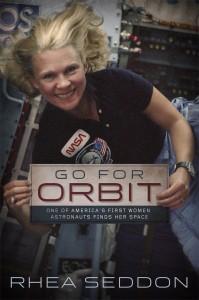After Challenger

Challenger Accident
After Challenger With the renewed interest about the Challenger accident from the Netflix series, I’ve been asked about what happened afterward. Reflecting on the aftermath of the accident has given me time for introspection.
Everyone knows about the Rogers Commission which determined that a leaking O-ring on one of the boosters was the cause of the loss of Challenger and that the problem could be fixed. One thing that could not be fixed was the loss of so many dear friends and the havoc it wreaked on their families for the rest of their lives.
What about the Astronauts who were part of the crews that were waiting to fly? How did they make the decision to stay or leave? How did my husband and I decide?

STS—40 My Dream Flight
Those decisions were very personal. Both of us had flown prior to Challenger – me once and Hoot twice. For us, deciding to stay or leave involved assessing the risk vs. the benefit for our futures, NASA’S, and that of our families. I had been assigned to my “dream” flight – the first dedicated life sciences mission in which I could use all the things I had learned in college and in medicine to advance our knowledge of human adaption to space. Hoot had every reason to assume his future with NASA would be bright.
But what about our children? We took comfort in knowing that if something happened to one of us the other would be there for the kids. We both knew that we had been given amazing and much sought-after opportunities when we were selected to be Astronauts and we felt a responsibility to stay.

My son Dann at launch
However, it was gut-wrenching to have our children see the accident and to be afraid for us. Paul was four at the time and he was very anxious watching the next launch – worried another accident could happen and that his father might be on it (which he wasn’t). When my third launch rolled around, my younger son, Dann, was more perceptive. When I announced I was going into quarantine for my next flight – his little face crumbled and I knew that he understood the risk I was about to take. He was frightened for me despite all my assurances.
Other Astronauts made different decisions for other reasons. For several, their wives didn’t want to go through the stress of watching their husbands face the perils that would always be present for spaceflights. Several of the Astronauts decided it was time to move on – many to other lower-risk jobs at NASA or with the contractors that designed, built, and managed space vehicles.

The Challenger Crew
All of the things that went on after the accident brought a new reality to our lives and changed each of us – and our families – forever.
If you’d like to receive my blog to your inbox each month, we’d love to add you to our email list. If you have not yet signed up, please do so today by clicking here.
Follow me on Facebook and LinkedIn.
Subscribe to Dr. Seddon’s YouTube Channel here!



Rhea- Thank you for these insights. Losing the Challenger was a shock of global proportion and must have been particularly excruciating for those in the NASA community. Even pilot astronauts who had been hardened by the deaths of fellow aviators and squadron mates in flying accidents would later say say that Challenger was emotionally more difficult for them. It might have been even more difficult for the Mission Specialists from non aviation backgrounds who had not previously experienced the losses associated with high risk occupations.
Do you think that a public, highly publicized accident like Challenger or Columbia is more difficult for those left behind than a loss grieved more privately?
I sure am glad you decided to stay. It makes me proud that I got to work on your “dream flight”!